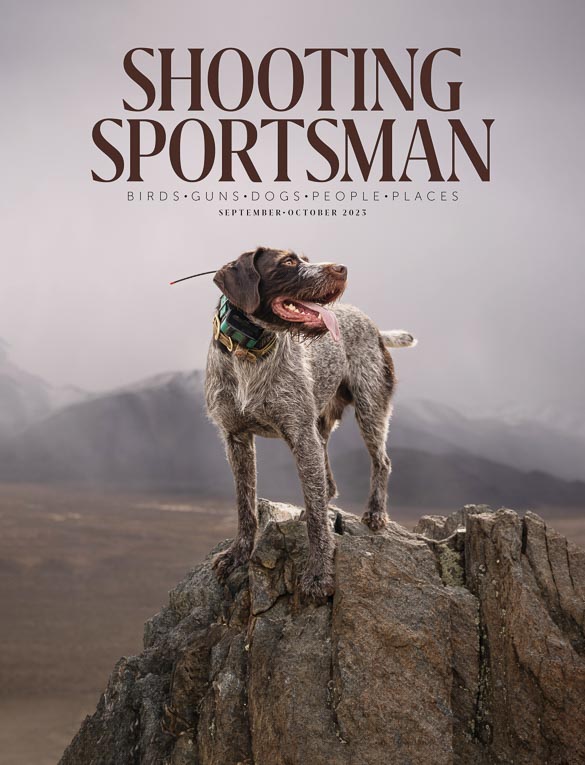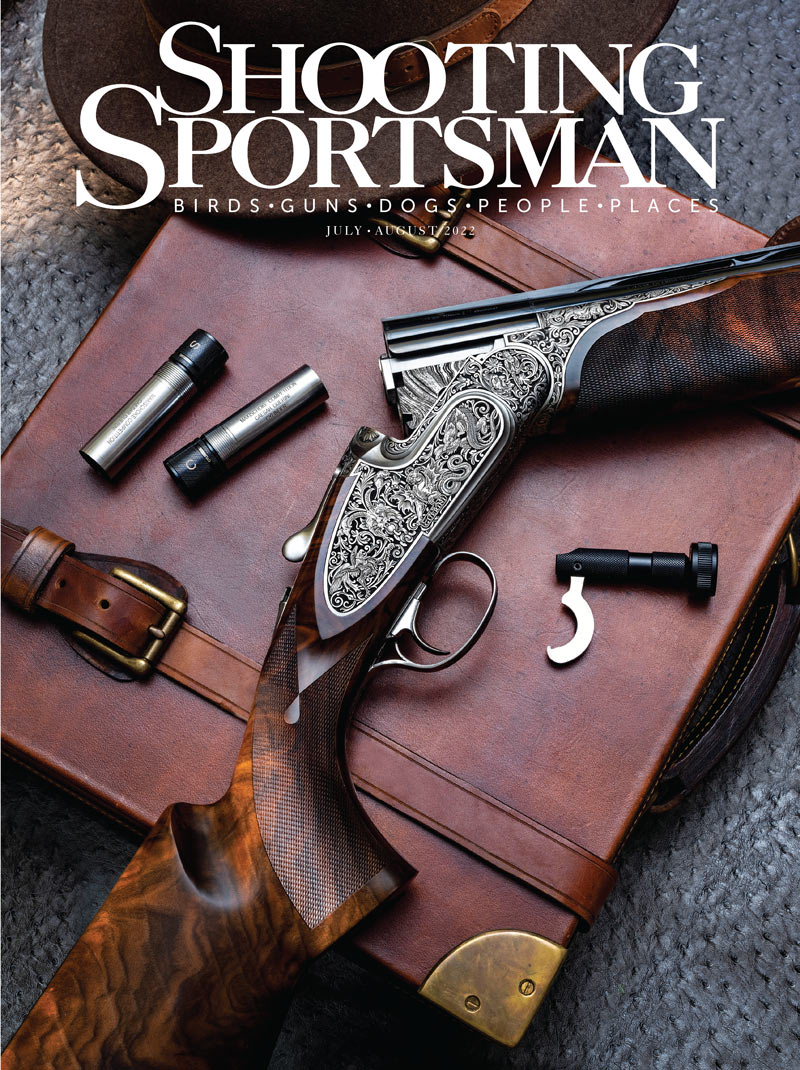Prior to each hunting season, it is a good idea to address the issues that have caused you to miss in the past. Everyone wants to be successful, whether they are experienced wingshooters or just getting into the sport. Following is a list of common reasons upland hunters miss. It was assembled from personal experience as well as discussions with countless other bird hunters. While not all of these issues may apply to you, your shooting will benefit from analyzing the various causes and working to improve those you feel might affect your performance.
Poor Gun Mount
A smooth, efficient gun mount is an essential skill of the upland hunter. A good gun mount is also one of the skills that can be practiced and developed at home or even in the office. With the heel of the stock level with your armpit, slowly raise the gun to fit under your cheekbone and into your shoulder pocket. This move aligns your dominant eye consistently on the bird’s line of flight. This move can be practiced in a mirror, where you can look down the barrel and see that your eyes are in the right place.
Poor Footwork
Good footwork is crucial, whether you are shooting upland birds or clay targets. Having your feet in the correct position ensures that you can turn smoothly to the left and right. If you have not mastered footwork, you are limiting your ability to turn into the bird’s line of flight. Both left- and right-handed shooters should adopt a neutral position, with their weight evenly distributed on both feet. Whether the bird flushes left or right, step forward on your lead foot—the left foot for right-handed shooters and the right foot for left-handers. Good footwork requires practice, which can be done on the clays course in the off-season.
Lack of Focus
You must practice using hands and eyes simultaneously while focusing on the bird. The brain receives the information from the eyes, processes it and uses the information to guide the hands to the bird, placing the gun in the correct place. Like the gun mount, this skill is best practiced slowly, allowing for improved muscle memory.
Eye Dominance
Eye dominance should be the first thing that is checked not only for beginning shooters but also if experienced shots begin missing. A quick test is: With both eyes open and your arm out straight, point at a small object in the distance. Now close one eye and then the other. Because your finger is steered by your dominant eye, whichever eye is open when your finger remains pointing at the object is your dominant eye. If you are right-handed and you find that you are left-eye dominant, you will need to consider shooting off your left shoulder (vice versa for left-handed shooters). Another option is to use a Shotspot (shotspot.co.uk) on your shooting glasses to control master-eye dominance. (If you are right-handed and left-eye dominant, put the Shotspot on your left lens.)
Lack of Fitness
Approaching each new season, you need to get yourself and your canine companion in shape. Start with short walks on flat ground. If you have hilly terrain available, begin with short strolls, and then gradually increase your speed and distance and start working up and down hills. Using a treadmill can be a convenient alternative to outdoor exercise, and some machines allow you to increase the tread’s incline as your fitness improves.
Poorly Fitting Gun
You will never shoot to the best of your ability without a gun that fits properly. Using a poorly fitted gun typically results in a poor gun mount and frequent misses. Ideally you would get a fitting from a professional gunfitter, but you can also get an approximate idea of how your gun fits by doing the following.
First, determine if the stock is right- or left-handed (has cast-off or -on) and matches your preference. The barrel length should be approximately two times the length of pull. Next, you should be able to mount the gun to your cheek without having to roll your head to look down the barrel. Finally, you should have a space of one to two fingers between your rear hand and your nose when the gun is properly mounted. While this is no substitute for a proper gunfitting, it will give you a rough idea of whether your misses are being caused by a dramatically ill-fitting gun or something else.
Shotgun Is Too Heavy or Light
Your shotgun must be a reasonable weight, depending on your physique and quarry. Too light a shotgun can result in excess recoil, and too heavy a shotgun can wear you out after a day of walking. While you may shoot better with a heavier-gauge gun, the bottom line is that if you are too tired, you are more likely to miss. It is important to find a balance that works for you.
Wrong Gauge, Choke & Load for Quarry
Originally, shotguns came with standard chokes for standard game. But with the introduction of mobile chokes, the variety affords hunters many choices and the ability to fine-tune shots. The ability to swap out chokes from Cylinder to Full allows one to use the same shotgun for many types of hunting as well as clay shooting. Another plus is chamber sizes, especially in semi-autos and pumpguns. Larger chambers allow for shooting heavier loads, which are especially popular with waterfowlers. Choosing the right gauge is a matter of knowing the size of the quarry and the distances at which shots are likely to be taken. You might use a 20- or a 28-gauge for quail, but you could move up to a 12-gauge for pheasants. The right combination of gauge, choke and load will go a long way toward eliminating misses.
Aiming the Shotgun
One of the most consistent causes of missing is looking at the barrel or bead instead of focusing on the target. The bird is moving, and the shooter should be as well. After determining the bird’s flight path, if you don’t keep your eye on the target—even glancing at the barrel or bead—you almost surely will miss.
Not Picking a Bird
When multiple birds flush at once, it is key to pick one bird, follow its line of flight and pull the trigger. By randomly shooting into a group, you are almost certain to miss; but by picking out and concentrating on one bird, your chances of connecting increase significantly. Once again, hard focus and a smooth gun mount reap rewards.
To sumarise: Confirm that you have a gun that is of good weight, gauge and fit. Practice your gun mount, and work on the fundamentals of footwork, focus and fitness. If you decide to take shooting lessons, tell your instructor that you want to concentrate on upland hunting, as then you can work on target presentations that most closely replicate the flight patterns of upland birds.
Hopefully you recognize at least some of these reasons for missing and can begin remedying them before opening day. The results will be more birds brought to bag with good, clean shots and a much more enjoyable season.
Buy This Issue / Subscribe Now

Read our Newsletter
Stay connected to the best of wingshooting & fine guns with additional free content, special offers and promotions.





A friend and I were able to spend a half day with Chris to work on clays before the Krieghoff Masters in Savannah this past Spring.
A natural teacher, he immediately sees what you are doing versus what you THINK you are doing or you are TRYING to do.
He gifted me with the advice to tilt my shoulders to match the flight of the clay on the skeet field; left shoulder lower on the high house, right shoulder lower on the low house.
Now my swing is naturally aligned with the rising clay up to the mid stake and a clearer view of the climbing target than I had with my shoulders squared to the horizon.